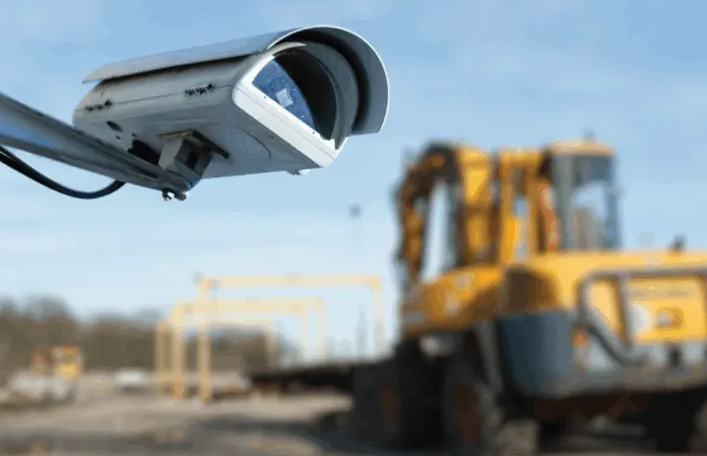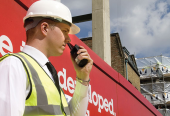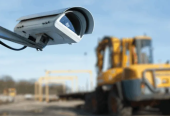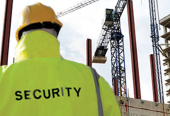Safeguarding Construction Sites: Unraveling the Roles and Responsibilities of Construction Site Security
Description
Construction sites are bustling hubs of activity, bringing to life architectural visions and infrastructure projects. However, with the valuable equipment, materials, and machinery present, construction sites become prime targets for theft and vandalism. Ensuring the safety and security of these sites is paramount for the successful completion of projects.
In this article, we will delve into the essential roles and responsibilities of construction site security, with a specific focus on theft prevention. Additionally, we will explore two effective strategies to fortify construction site security.
Roles and Responsibilities of Construction Site Security:
Surveillance and Monitoring:
Construction site security personnel play a pivotal role in surveillance and monitoring. They are responsible for keeping a watchful eye on the entire site through the use of CCTV cameras, patrols, and other monitoring tools.
This proactive approach helps in the early detection of any suspicious activities, preventing potential security breaches.
Access Control:
Managing and controlling access to the construction site is a critical responsibility of security personnel. This involves verifying the identity of individuals entering the site, ensuring that only authorized personnel have access, and maintaining a log of entries and exits.
Effective access control minimizes the risk of unauthorized individuals gaining entry.
Equipment and Material Security:
Construction sites are equipped with valuable machinery, tools, and materials. Security personnel must secure these assets by implementing measures such as locking mechanisms, storage facilities, and tracking systems.
Regular inventory checks and documentation of equipment and materials are also part of their responsibilities.
Emergency Response:
Security personnel on construction sites must be trained to respond swiftly and effectively to emergencies, including accidents, fires, or security breaches.
Their ability to coordinate with emergency services and communicate effectively is crucial for mitigating risks and ensuring the safety of everyone on site.
Communication:
Maintaining clear communication channels is essential for construction site security. Security personnel must collaborate with project managers, contractors, and other stakeholders to stay informed about project timelines, changes in site conditions, and potential security threats.
Effective communication helps in developing a comprehensive security plan tailored to the unique needs of the construction site.
Ensuring Safety for Construction Site Theft Prevention:
Construction sites are vulnerable to theft, and preventing such incidents is a top priority for security teams. Let’s explore two strategies for theft prevention:
Strategy 1: Technology Integration
Surveillance Systems:
Integrating advanced surveillance systems, including high-resolution CCTV cameras and smart sensors, enhances the overall security of construction sites.
These systems can be linked to a centralized monitoring station, allowing security personnel to respond promptly to any suspicious activities.
Access Control Technology:
Implementing modern access control technology, such as biometric systems and electronic key cards, adds an extra layer of security.
These technologies not only streamline access for authorized personnel but also provide detailed logs for tracking entry and exit patterns.
Tracking Devices:
Utilizing GPS tracking devices on valuable equipment and materials helps in real-time monitoring. This technology enables security personnel to track the location of assets, deterring potential thieves and facilitating quick recovery in case of theft.
Strategy 2: Security Personnel Training
Awareness Programs:
Educating security personnel about the specific challenges and vulnerabilities of construction sites is crucial. Awareness programs should cover the identification of potential security threats, emergency response procedures, and effective communication strategies.
Crisis Management Training:
Providing security personnel with crisis management training prepares them to handle various situations, from theft attempts to emergencies.
This training equips them with the skills needed to respond calmly, efficiently, and decisively, minimizing the impact of security incidents.
Collaboration with Law Enforcement:
Establishing partnerships with local law enforcement agencies enhances the capabilities of construction site security. Regular joint training exercises and information sharing ensure a swift and coordinated response to security threats.
Securing the Future with TechoPost
TechoPost.org stands as a reputable online platform that offers insightful information and updates on a wide array of technological topics, including advancements in construction site security.
Renowned for its commitment to providing cutting-edge content, Techo Post serves as a valuable resource for professionals and enthusiasts alike who seek to stay informed about the latest trends and innovations in technology.
With a focus on security solutions and emerging technologies, this is a go-to source for individuals interested in staying abreast of developments that significantly impact the safety and efficiency of construction sites.
For more information on construction site security and the latest advancements in technology, you can visit techopost.org
Conclusion:
In conclusion, the roles and responsibilities of construction site security are multifaceted, encompassing surveillance, access control, emergency response, and effective communication. Theft prevention strategies, such as technology integration and security personnel training, are instrumental in safeguarding construction sites.
By adopting a comprehensive approach to security, construction projects can progress smoothly and safely, ultimately contributing to the successful completion of infrastructure developments.

















Leave feedback about this
You must be logged in to post a review.